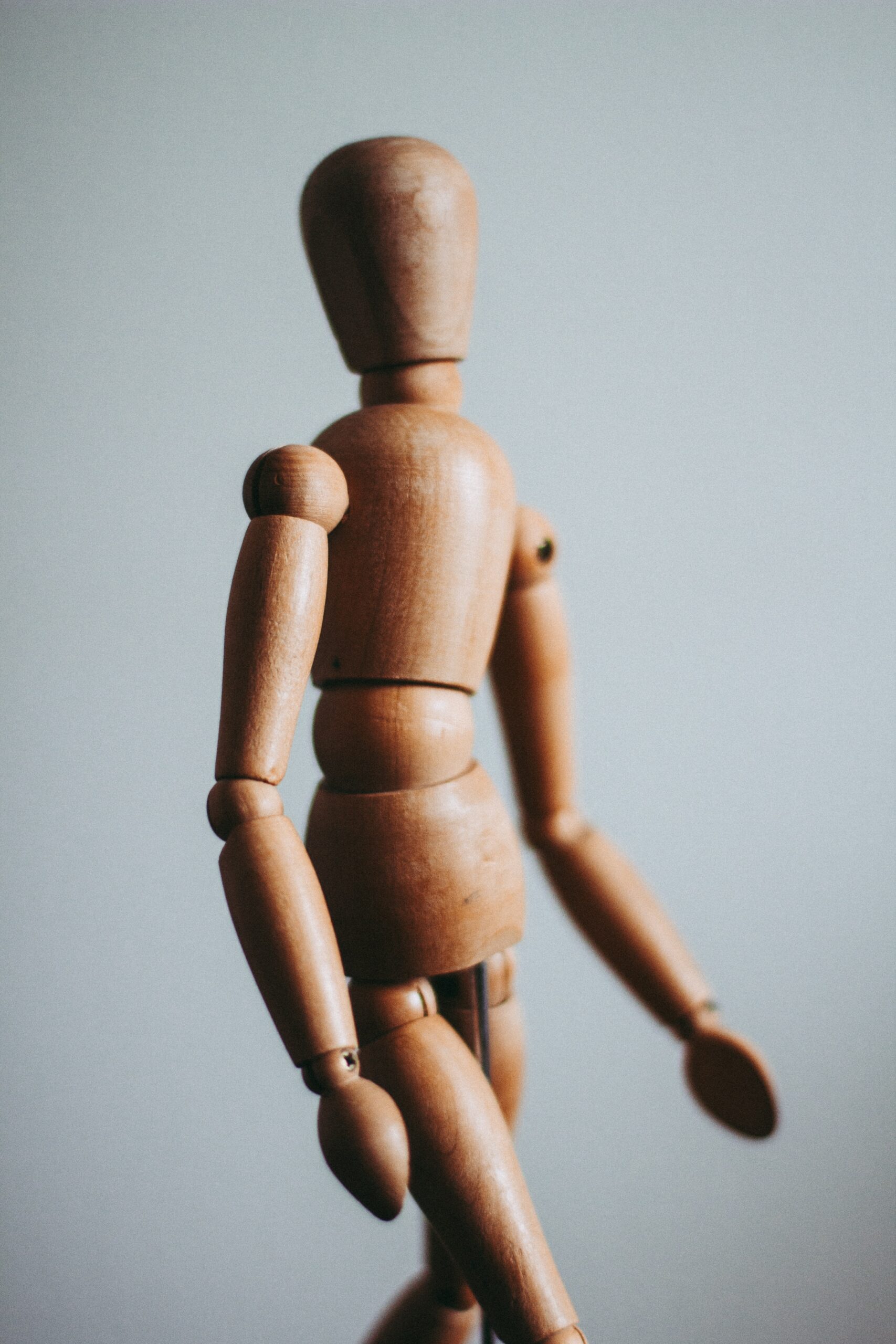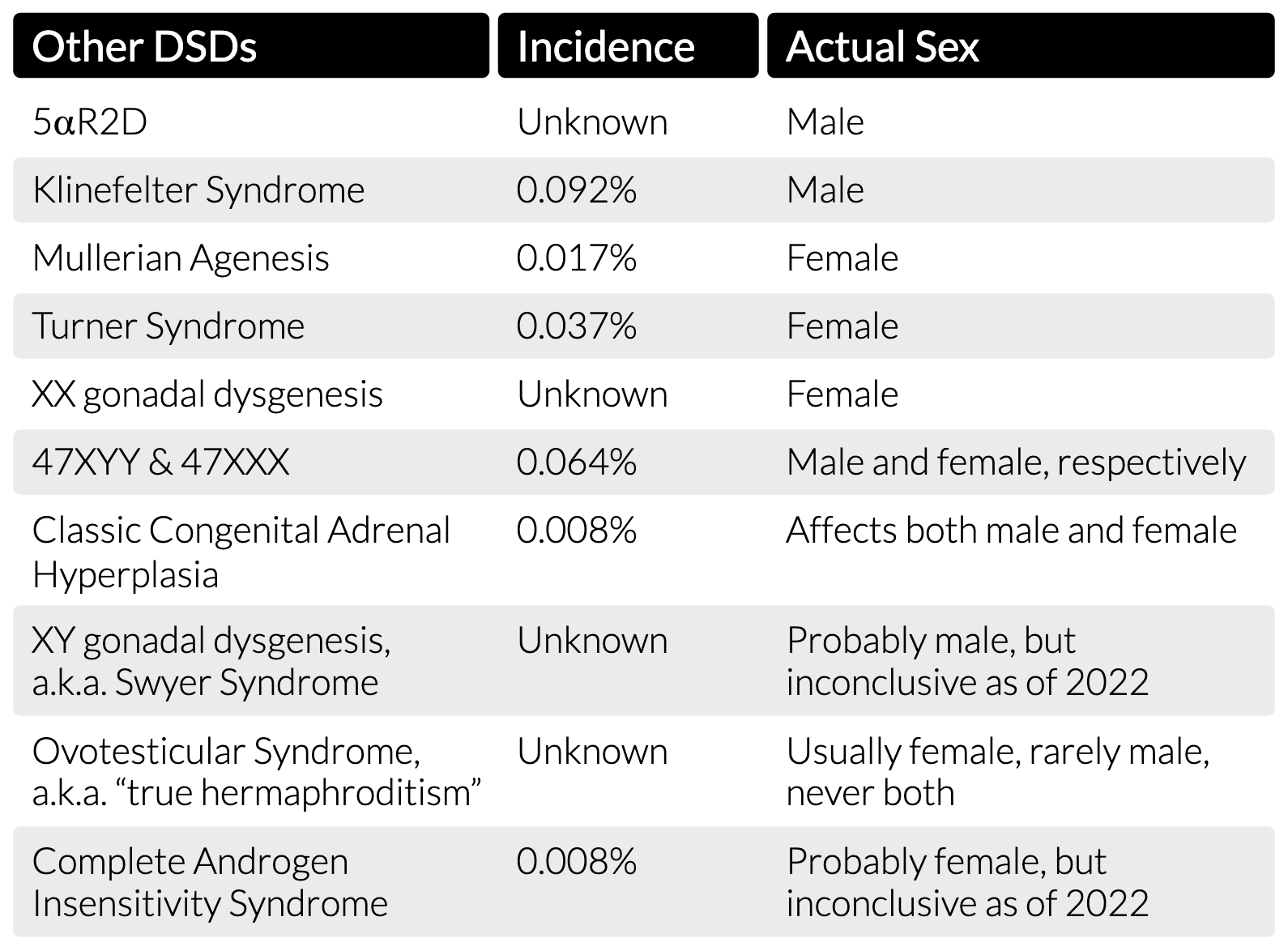Page Summary
- If people afflicted with DSDs are infertile, this does not mean they lack the capacities mentioned in the definitions of men and women. Instead, it means that there has been an obstacle to the full development of one of these capacities, which is still present.
- How common are these conditions and what do they mean for someone’s biological sex?
- People with DSDs should be treated with understanding and acceptance, not leveraged in attempt to make a point.
Does the existence of intersex people disprove the claim that there are only men and women?
No. Each person, including someone with an “intersex” condition, is either male or female, though in some rare cases full development as one or the other might be obstructed.
Ok, but what does that actually mean?
Listen to this article
By all outward appearances, Anna had been an average girl. At a routine checkup around age 11, Anna told the family’s doctor that puberty was starting, but not in the way the doctor expected to hear. Anna’s parents were referred to an endocrinologist, who diagnosed Anna with a rare condition known as 5-alpha-Reductase 2 deficiency (5αR2D). That meant that Anna had always been a biological male who merely appeared outwardly to be female to the doctors, nurses, and even the parents themselves, until the onset of puberty. The whole family was shocked at the diagnosis and didn’t know how to respond.


Conditions like 5αR2D are often called Disorders/Differences of Sexual Development (DSDs) or “intersex” conditions. Cases such as these are sometimes used as counterexamples to our claim that all human beings are either women (with the capacity to generate within themselves) or men (with the capacity to generate in another). While some people afflicted with DSDs are actively able to generate a child, it is also common for others to be infertile or impotent. Importantly, this does not mean they lack the capacities mentioned in the definitions of men and women, but rather that there has been an obstacle to the full development of one of these capacities, which is still present.
The presence of one of these capacities is the deciding factor in determining a person’s sex, in spite of abnormalities in sex chromosomes or external genitalia. There exist no recorded cases of an individual having functioning reproductive organs of both a woman and a man.
How common are these conditions? One common estimate indicates that approximately 1.7% of live births involve some sort of “intersex” condition. The most common, Late-Onset Congenital Adrenal Hyperplasia (LOCAH), accounts for 1.5%. The remaining cases, approximately 0.2%, are summarized in the table below. LOCAH can affect either men or women, but it doesn’t actually result in abnormalities that make it difficult to determine sex. XY males with the condition have unambiguously male genitalia and XX females with the condition have unambiguously female genitalia.
The only reason it gets included in the “intersex” umbrella is that individuals “deviate from the Platonic ideal of physical dimorphism”. This could mean anything from hair growth to testosterone levels, and has no bearing on our definition of man and woman.

*There are rare examples of individuals with ovotesticular syndrome giving birth, but no confirmed instances of being fertile as males.
Compare these cases with the 0.0001% of people born with anencephaly (there are other conditions which also impair rational activity that could be included, such as more severe forms of spina bifida, but it’s difficult to find incidence statistics for them). Both of these—congenital disorders of the reproductive system and congenital disorders of the nervous system—are usually accompanied by comorbidities that can impact one’s proper medical well-being in ways unrelated to the system in question.
Anencephaly doesn’t alter our view of the relationship between reason and the human person; each human being is essentially rational and ordered to reasoning activity, even if the actual exercise of reason is impeded in a specific case. In other words, there’s still a major difference between a person in a persistent vegetative state on the one hand and a literal vegetating plant on the other. With respect to reproductive systems, there is also a major difference between a woman with Turner Syndrome and a typical man.
Forms of gonadal dysgenesis similarly impede the ordinary development of the human being and shouldn’t redefine the baseline understanding of human sexuality any more than anencephaly should redefine the baseline understanding of human rationality.

…functional debility does not result from a debility of the soul but from that of a bodily organ.
St. Thomas Aquinas, Quaestiones disputatae de anima, q. 14, ad. 18
What is called for in both cases is understanding and acceptance of those who are impacted by it, along with patient attention to further scientific findings unmotivated and unbiased by contentious worldviews.
In cases like Anna’s, something has gone wrong developmentally, but that doesn’t mean there’s something “wrong” with Anna or that Anna is “wrong.” It means something wrong has been inflicted on Anna. Anna is still an irreplaceable child of God, with dignity, and should be treated as any person should be treated: with respect and love. (search keywords: trans, transgender)
References
- Blackless, M., Charuvastra, A., Derryck, A., Fausto-Sterling, A. Lauzanne, K., & Lee, E. (2000). How sexually dimorphic are we? Review and synthesis. American Journal of Human Biology, 12, 151-166.
- Fausto-Sterling, A. Sexing the Body: Gender Politics and the Construction of Sexuality, Basic Books (New York: 2000).
- Finley, J. ed. Sexual Identity: The Harmony of Philosophy, Science, and Revelation, Emmaus Road Publishing (Steubenville, Ohio: 2022).
- Lee, P. A., Houk, C. P., Ahmed, S. F., Hughes, I. A., & International Consensus Conference on Intersex organized by the Lawson Wilkins Pediatric Endocrine Society and the European Society for Paediatric Endocrinology (2006). Consensus statement on management of intersex disorders. International Consensus Conference on Intersex. Pediatrics, 118(2), e488–e500. http://pediatrics.aappublications.org/content/118/2/e488
- Lee, P. A., Nordenström, A., Houk, C. P., Ahmed, S. F., Auchus, R., Baratz, A., Baratz Dalke, K., Liao, L. M., Lin-Su, K., Looijenga, L. H., 3rd, Mazur, T., Meyer-Bahlburg, H. F., Mouriquand, P., Quigley, C. A., Sandberg, D. E., Vilain, E., Witchel, S., & Global DSD Update Consortium (2016). Global Disorders of Sex Development Update since 2006: Perceptions, Approach and Care. Hormone Research in Paediatrics, 85(3), 158–180.
- Sax, L. (2002). How common is intersex? a response to Anne Fausto-Sterling. Journal of Sex Research, 39(3), 174–178.


